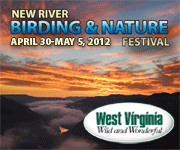
My photographic record of our North Dakota trip is spotty. Upon returning to Ohio, I had a huuuge amount of trouble downloading my photos; in fact, trying to force-feed all the images to my overloaded laptop started a series of crashes that defined July for me as a month of extreme technofrustration. It's one of the side effects of becoming a blogger, I think, one of the hidden costs of taking photos of practically everything you do. That translates into a lot of memory, which translates into a smoking-hot laptop that is prone to crashes, which resulted in the loss of a good part of my summer photos. They just vanished, never made it to the hard drive or the backup. Believing I had them all finally shoehorned onto my hard drive and the backup, I deleted them from the camera. I didn't find out until last week that most of my North Dakota bird photos and all--all--of my wild horse photos were deleted. Arguing stallions, nursing foals...landscapes with paints and dapples... I can't think about it without getting teary.
A few remain, a hop-scotch across the prairies, disjointed and spotty. For someone who loves to tell stories with photos, that's a bummer.
As always in the prairie potholes, the birding was incredible. This one flooded field had so many duck and shorebird species we literally didn't know where to start, or where to stop. So we hung out and scoped until our eyes crossed, always finding something new. The field was chock-full of migrating shorebirds, white-rumped sandpipers chief among them.

There were some sanderlings still coming through in high breeding plumage. I wasn't sure whether they were headed north or south! It was a funny June--cold as heck. They might have gone up, seen the ice, and headed back south without even trying to nest.
 Quite a different birdie from the white and gray ghost that runs on Carolina beaches in winter, huh?
Quite a different birdie from the white and gray ghost that runs on Carolina beaches in winter, huh?I've posted lovely Baird's sparrow photos in past years. This is not one of them, but it's all I got in the rain. Baird's sparrow is a specialty of the Potholes festival, one many people travel to North Dakota to add to their life lists. On this day, walking through the sodden prairie vegetation was akin to wading in knee-deep water.

A black-tailed jackrabbit sits in the road, waiting to run.
 And sproinks away, all four feet in the air.
And sproinks away, all four feet in the air. A lovely painted turtle crosses a deserted road. How did she get here, in the middle of the prairie?
A lovely painted turtle crosses a deserted road. How did she get here, in the middle of the prairie?
Her kind have always been here.

We moved her where no one would run over her, in the direction she was headed.

A sora waited to say hello to her on the other side. See its yellow bill?

The American badger is a quest animal for us each year. It's rare, getting rarer as agriculture and persecution crowd it out. Darned hard to find, even in the stronghold of its range, and spooky as heck. Large carnivores who dig huge holes are considered a nuisance in agricultural areas, whether they're rare or not. This is is not the way I had hoped to see a badger.
 In seven Junes in North Dakota, Bill and I have yet to see more of a badger than its rear end disappearing into a ditch. And that, only once. Seeing this evidence of their cruel and senseless persecution makes it clear why. Humanity's sacred claim to dominion over the beasts and birds never made sense to me. It still doesn't. My father quoted Scripture to me whenever I argued or pled for the rights of animals. And even then, as a little child, the holy writ sounded like it was being twisted into a justification for behaving like a jerk. Drive-by shootings of mother badgers: do they fall under Acceptable Behavior for We Who Have Dominion? Let's see...
In seven Junes in North Dakota, Bill and I have yet to see more of a badger than its rear end disappearing into a ditch. And that, only once. Seeing this evidence of their cruel and senseless persecution makes it clear why. Humanity's sacred claim to dominion over the beasts and birds never made sense to me. It still doesn't. My father quoted Scripture to me whenever I argued or pled for the rights of animals. And even then, as a little child, the holy writ sounded like it was being twisted into a justification for behaving like a jerk. Drive-by shootings of mother badgers: do they fall under Acceptable Behavior for We Who Have Dominion? Let's see...18. Red Fox, Gray Fox, Coyote, Raccoon and Badger Hunting or Trapping
Open year-round (officially from April 1 - March 31)
Apparently so.
News flash to the North Dakota Game and Fish Department: There were about a hundred people who traveled from 14 states to attend the Potholes and Prairies Festival who were yearning to see a live badger in the wild. Many of us drove around specifically looking for badgers, and found little more than empty burrows. We were shocked, saddened and sickened to see graphic evidence of North Dakota's year-round open season on American Badgers. Is this scene the message you wish to send ecotourists about your vanishing native prairie wildlife?
The songs in my head: "Tell the Universe" and "Beautiful Creatures" by Bruce Cockburn.





Monday, September 7, 2009
18 comments